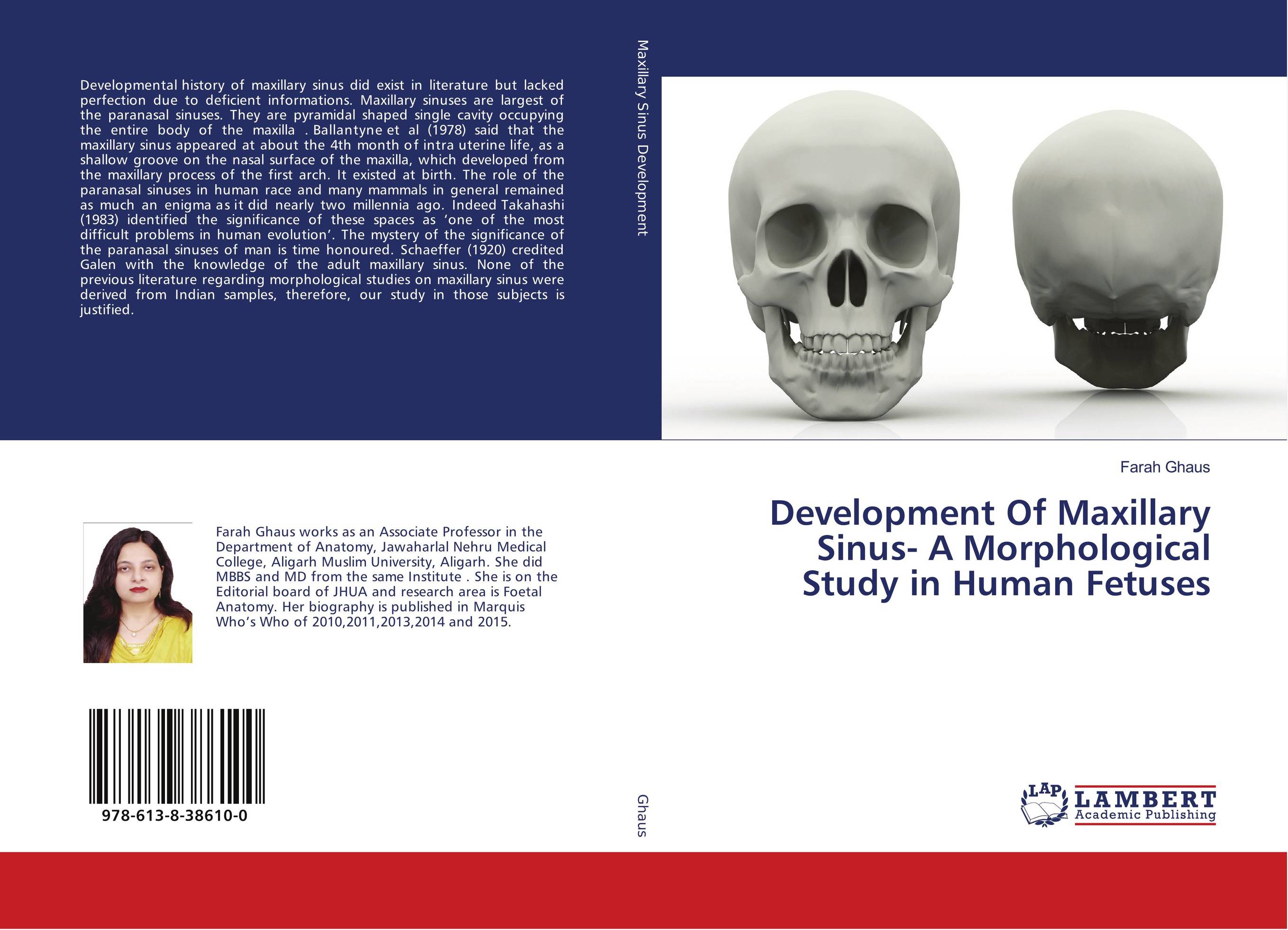| Поиск по каталогу |
|
(строгое соответствие)
|
- Профессиональная
- Научно-популярная
- Художественная
- Публицистика
- Детская
- Искусство
- Хобби, семья, дом
- Спорт
- Путеводители
- Блокноты, тетради, открытки
Development Of Maxillary Sinus- A Morphological Study in Human Fetuses.

В наличии
| Местонахождение: Алматы | Состояние экземпляра: новый |

Бумажная
версия
версия
Автор: Farah Ghaus
ISBN: 9786138386100
Год издания: 2018
Формат книги: 60×90/16 (145×215 мм)
Количество страниц: 144
Издательство: LAP LAMBERT Academic Publishing
Цена: 28613 тг
Положить в корзину
| Способы доставки в город Алматы * комплектация (срок до отгрузки) не более 2 рабочих дней |
| Самовывоз из города Алматы (пункты самовывоза партнёра CDEK) |
| Курьерская доставка CDEK из города Москва |
| Доставка Почтой России из города Москва |
Аннотация: Developmental history of maxillary sinus did exist in literature but lacked perfection due to deficient informations. Maxillary sinuses are largest of the paranasal sinuses. They are pyramidal shaped single cavity occupying the entire body of the maxilla . Ballantyne et al (1978) said that the maxillary sinus appeared at about the 4th month of intra uterine life, as a shallow groove on the nasal surface of the maxilla, which developed from the maxillary process of the first arch. It existed at birth. The role of the paranasal sinuses in human race and many mammals in general remained as much an enigma as it did nearly two millennia ago. Indeed Takahashi (1983) identified the significance of these spaces as ‘one of the most difficult problems in human evolution’. The mystery of the significance of the paranasal sinuses of man is time honoured. Schaeffer (1920) credited Galen with the knowledge of the adult maxillary sinus. None of the previous literature regarding morphological studies on maxillary sinus were derived from Indian samples, therefore, our study in those subjects is justified.
Ключевые слова: development, human foetus, Maxilla, morphology



